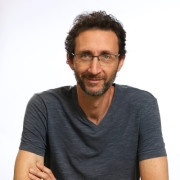Dynamics of cell state switching: from yeast meiosis to mammalian cell reprogramming: The ability of cells to switch their physiological state upon a change in signals is essential to survival of unicellular organisms, development of multicellular ones, disease and response to treatment processes. Such switching “decisions” are typically studied at the level of cell populations, focusing on the average behavior and often masking extensive variation between individual cells. When such variation occurs in decision processes it can have significant biological implications. For example, it can lead genetically identical cells in the same environment to assume different fates.
Our goal is to understand how cells within a population reach developmental decisions at the phenotypic and mechanistic level. How do cells “decide” to change their state? Why do similar cells respond differently to the same signal? What properties of the cell affect its decision? What determines these properties and their spread in the cell population? What determines which cell states are stable? Our lab will study these fundamental questions in two model systems using methods from live cell fluorescent imaging, statistical and computational analysis.
Approach - Understanding Differentiation at the Single Cell Level: We first tried this approach on the process of meiosis and sporulation in budding yeast following a starvation signal. I have developed a setup for studying decision timing at the single cell level in populations of yeast cells entering meiosis. This setup is based on time-lapse fluorescence microscopy, and measures the timing of landmark meiotic events (e.g. onset of transcriptional program, Meiosis I and II) in thousands of individual yeast cells. I have developed image and statistical analysis software to automatically analyze the resulting image sequences. Using methods from statistics/Bayesian inference I was able to extract several important findings in this system: the timing of decision to enter meiosis is decoupled from the cell cycle state of the cell, as well as from its nutritional history; variation in the production rate of the meiotic transcriptional master regulator Ime1 combined with its gradual protein accumulation over time govern the decision time variability; the effect of a global factor (cell size) on timing is channeled through the molecular level of Ime1. This work provided one of the first examples tying variation/noise in gene expression with a significant phenotype. It also provides a model and a general framework for the study of temporal developmental processes.
Some specific projects:
- Propagation of information through signaling and transcriptional pathways: Cell populations in the nature face different cues from the environment that change in different frequencies. For example, a yeast colony in the vineyard senses different levels of heat, humidity, osmolarity and nutrient levels changing at different rates. Effective response to these fluctuating cues raises several challenges. Can the cells distinguish between a fleeting cue and a consistent change? Can they filter out the former to avoid mistaken decisions? How do their signaling and transcriptional networks handle these complex fluctuations? We will study the decision responses to signal fluctuations in the yeast meiosis process using live cell microscopy and custom-designed microfluid devices capable of generating spatial and temporal signal gradients.
- Control dynamics in transcriptional regulation: During cell state changes, master regulators need to orchestrate the timely activation of many different proteins. How does a master transcriptional regulator control its targets differentially? Can it achieve consistent timing differences in their activation? Does the variability in its levels generate variable onset times or variable levels of its targets? We will study the accuracy, reproducibility and temporal structure of a transcriptional response at the single cell level, using the early meiosis transcriptional module as a model system. We will construct and use libraries of multiple-color strains, each tagging several components from the studied sub-network.
- Reprogramming of mammalian cells into an induced pluripotent stem cell state: In this process, whose development is a major breakthrough of recent years, a population of identical adult cells is directed to pluripotency by forced activation of four transcription factors, yet only a small fraction ends up in the desired state. We want to understand the dynamics of the process, its different phases, and the different paths cells can take during reprogramming. In collaboration with a lab at Harvard, we perform live imaging of the entire reprogramming process, combining live fluorescent markers and immuno-staining at intermediate points. We have delineated the stages of the process, and will try to back-track the determinants of successful reprogramming and study the alternative fates adopted by other cells in the process.
Methodology: Our work involves experiment, theory and computation. We combine live cell fluorescent imaging, microfluidics and image analysis to follow thousands of cells for long periods of time, as they make decisions based on their environment. We use modeling, statistical and computational methods to analyze these experiments. By observing the natural variability in these systems and by using statistical tools we extract mechanisms and principles leading to specific responses.


